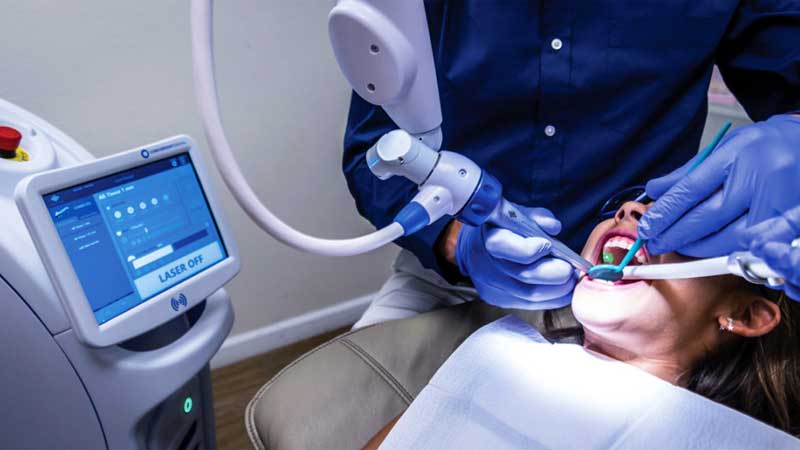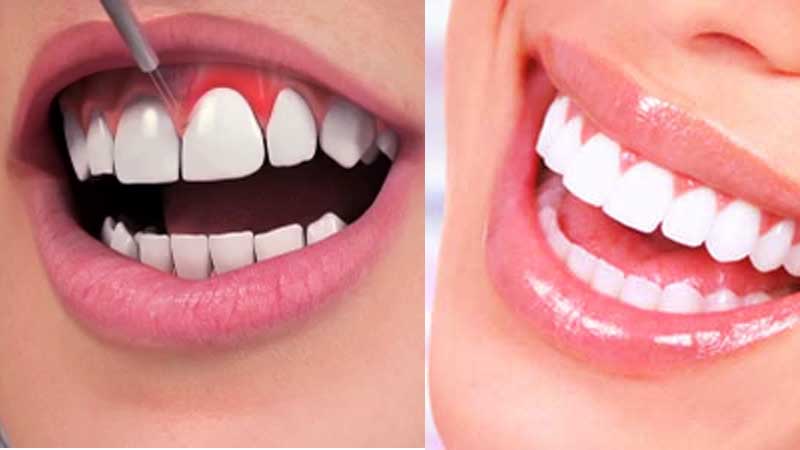
Laser dentistry is the use of lasers to treat several different dental conditions. The incorporation of lasers into our practice has revolutionised the way we treat patients, which increases the efficiency, specificity, ease, cost, and comfort of dental treatment. The laser dentistry treatment process is much similar to other dentistry appointments like tooth filling, gum surgery, etc. The patient won't feel any discomfort from the laser. The laser causes far less bleeding. less pain than a scalpel and the patient won't have any open bleeding wound after this procedure.
Advantages of Laser Dentistry
At Smile Center India, we choose laser dentistry in gummy smile correction, Cavity removal, Curing or hardening of bonding materials, teeth whitening, etc. due to the following major benefits associated with this technique:
- Procedures performed using soft tissue dental lasers may not require sutures (stitches).
- Certain laser dentistry procedures do not require anesthesia.
- Laser dentistry minimizes bleeding because the high-energy light beam aids in the clotting (coagulation) of exposed blood vessels, thus inhibiting blood loss.
- Bacterial infections are minimized because the high-energy beam sterilizes the area being worked on.
- Damage to surrounding tissue is minimized.
- Quick and comfortable, Wounds heal faster and tissues can be regenerated.
Types of Dental Lasers & its uses at Smile Centre
Soft Tissue Lasers:
Commonly used soft tissue lasers are Neodymium YAG (Nd: YAG) and diode lasers, which may be used as a component of periodontal treatment and have the ability to kill bacteria and activate the re-growth of tissues. The carbon-dioxide laser minimizes damage to surrounding tissue and removes tissue faster than the fiber optic method.
The soft tissue application includes wound healing, removal of hyperplastic tissue to uncovering of impacted or partially erupted tooth, photodynamic therapy for malignancies, photostimulation of the herpetic lesion.
Hard Tissue Lasers:
Hard tissue lasers have a wavelength that is highly absorbable by hydroxyapatite (calcium phosphate salt found in bone and teeth) and water, making them more effective for cutting through tooth structure. Hard tissue lasers include the Erbium YAG and the Erbium chromium YSGG. The primary use of hard tissue lasers is to cut into bone and teeth with extreme precision. Hard tissue lasers are often used in the “prepping” or “shaping” of teeth for composite bonding, the removal of small amounts of tooth structure, and the repair of certain worn down dental fillings.
In hard tissue application, the laser is used for caries prevention, bleaching, restorative removal and curing, cavity preparation, dentinal hypersensitivity, growth modulation, and diagnostic purposes.

